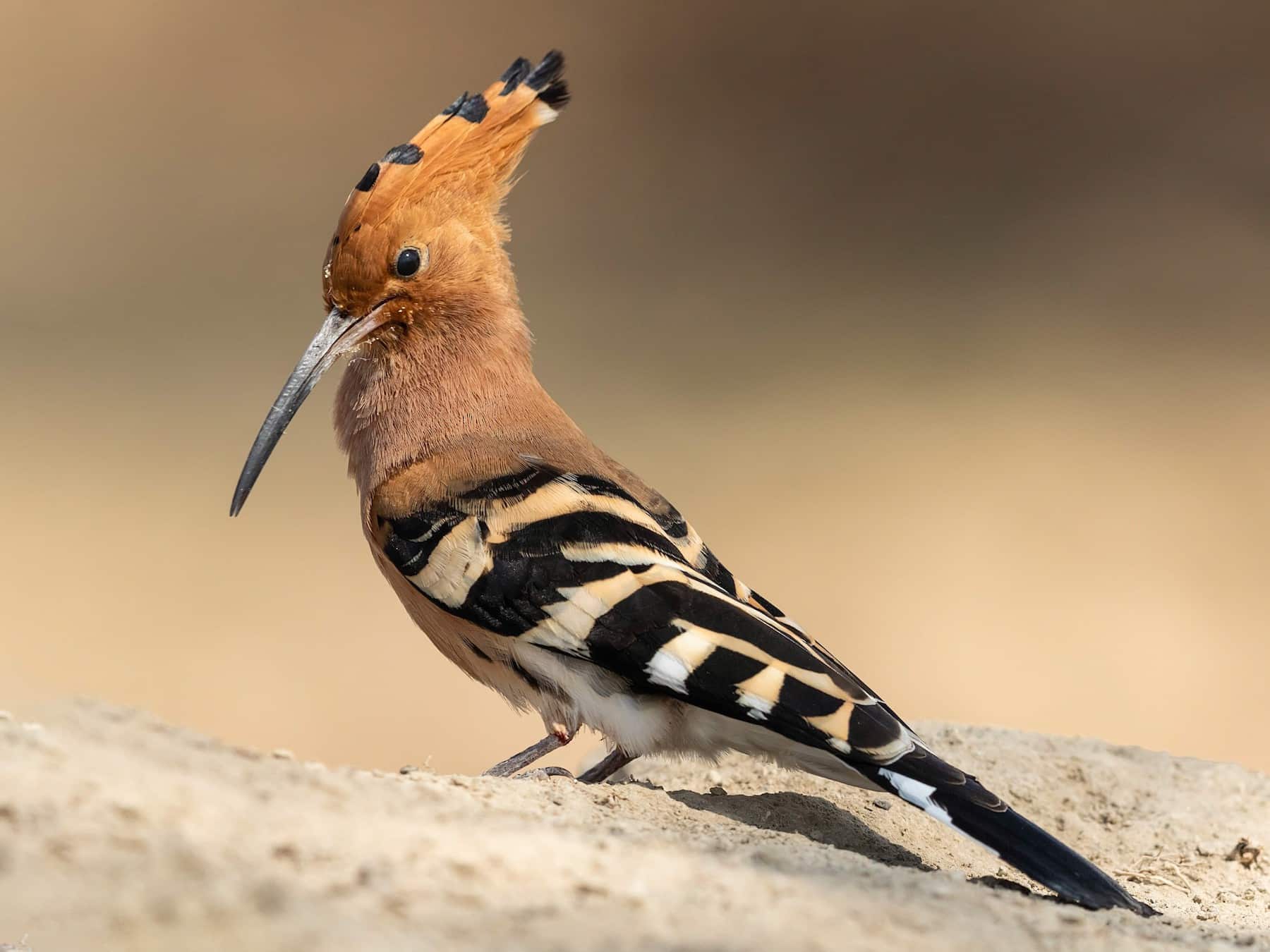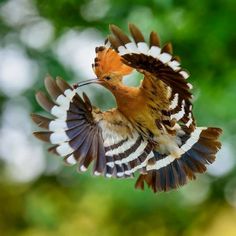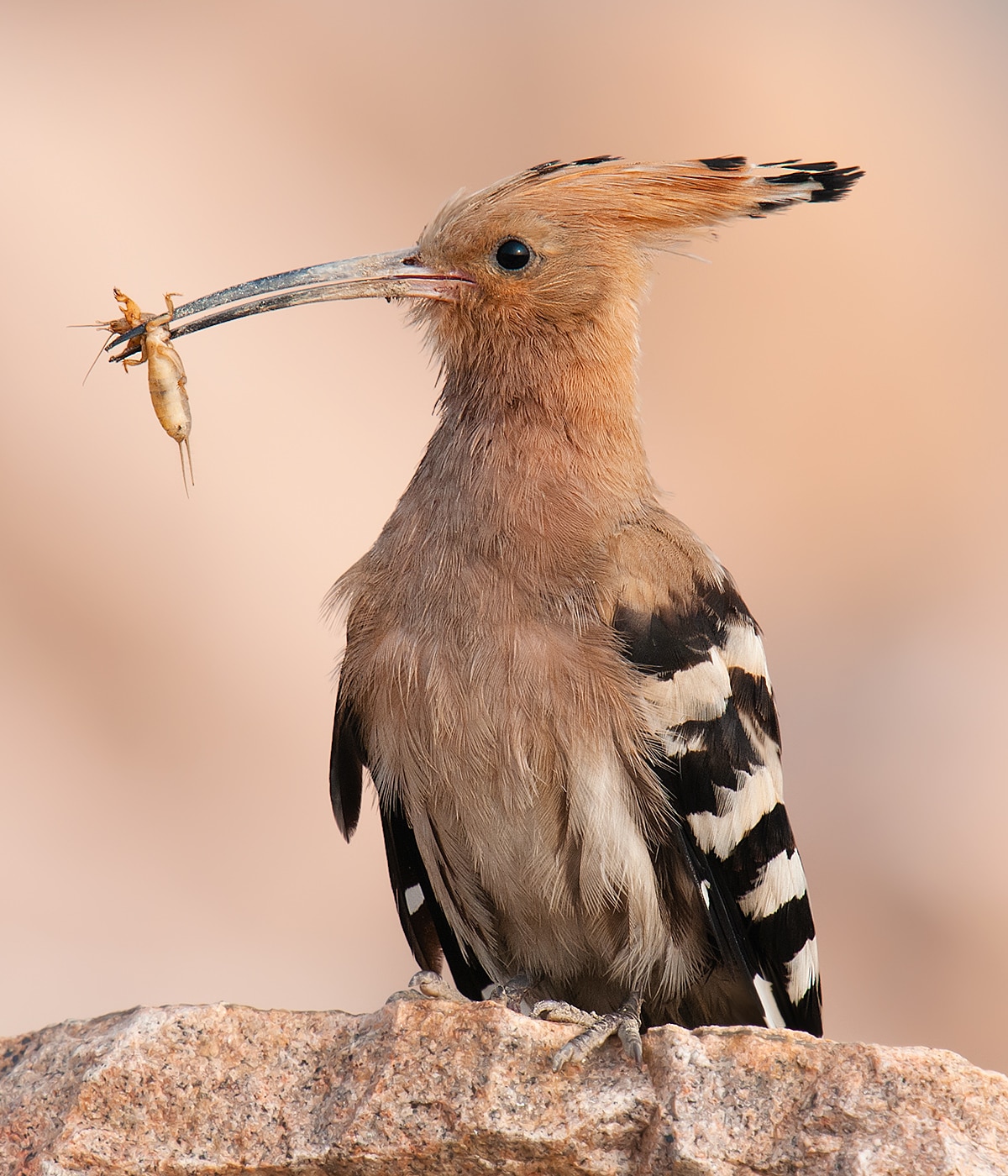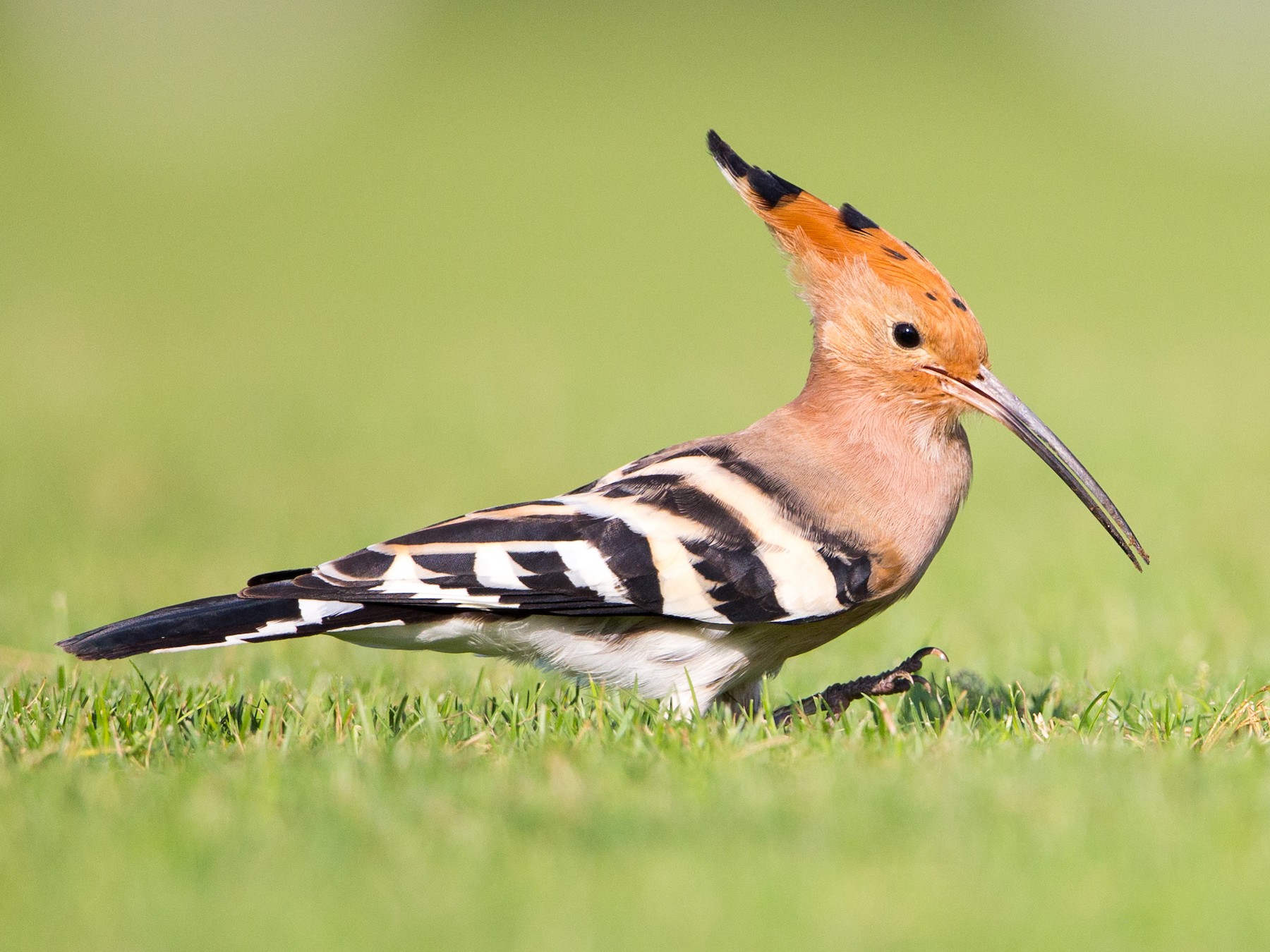
The Eurasian Hoopoe, with its captivating beauty and enchanting behaviors, stands out as one of nature’s most marvelous creations. Scientifically known as Upupa epops, this stunning bird belongs to the family Upupidae and is celebrated for its unique appearance and fascinating characteristics.

Measuring around 25 to 29 centimeters in length, the Eurasian Hoopoe showcases distinctive physical features that make it easily recognizable in the avian world. Its slender body and curved bill are perfectly adapted for its diet, but its most striking attribute is the prominent crest on its head. Composed of a striking combination of black, white, and cinnamon-colored feathers, this remarkable plumage creates an eye-catching display, especially during courtship rituals or moments of agitation when the hoopoe fans out its crest.

Native to diverse regions across Europe, Asia, and North Africa, the Eurasian Hoopoe can be found in a wide range of habitats. From open woodlands and parklands to savannahs and even urban areas with suitable trees for nesting, these adaptable birds have established their presence. They prefer areas with short grass, facilitating their foraging behavior. As primarily insectivorous creatures, they feast on a diverse diet that includes insects, worms, larvae, and small reptiles.

Breeding season is a particularly fascinating time for the Eurasian Hoopoe, as it exhibits remarkable courtship rituals. Male hoopoes engage in elaborate displays to attract females, involving wing flapping, crest-raising, and vocalizations. Once a pair forms a bond, they search for a suitable nesting site, typically a tree cavity or a man-made structure like a hollow in a wall or even a letterbox. The female then lays a clutch of 5 to 12 eggs, which she incubates for approximately 15 to 18 days. The male actively participates in the incubation process, taking turns with the female to ensure the eggs are well cared for.

Upon hatching, the chicks receive dedicated parental care from both the male and female. The parents tirelessly feed the nestlings a diet of regurgitated insects, ensuring their growth and development. After about three weeks, the chicks fledge, indicating their readiness to leave the nest and embark on their independent journeys. Notably, Eurasian Hoopoes often raise two broods in a single breeding season, showcasing their remarkable reproductive capabilities.

The Eurasian Hoopoe’s distinct appearance and captivating behaviors have earned it a place of admiration among birdwatchers and nature enthusiasts worldwide. Its unique combination of colors, coupled with its acrobatic displays during courtship, make it a sought-after sight for those armed with binoculars and cameras. Furthermore, the bird’s adaptability to various habitats and its intriguing breeding habits make it a subject of scientific interest, contributing to our understanding of avian ecology and behavior.

Despite its widespread distribution, the Eurasian Hoopoe faces various threats to its existence. Habitat loss resulting from urbanization, deforestation, and the pet trade pose significant challenges to the survival of this species. Conservation efforts focused on preserving its natural habitats, raising awareness, and promoting responsible birdwatching are crucial to ensure the continued presence of this delightful bird in our ecosystems.
In conclusion, the Eurasian Hoopoe stands as a true marvel of nature, enchanting us with its captivating beauty and fascinating behaviors. Its unique appearance, adaptable nature, and intriguing breeding habits make it a cherished species among bird enthusiasts. As we appreciate the splendor of the Eurasian Hoopoe, let us also strive to protect its habitats and ensure its place in the natural world for generations to come.



